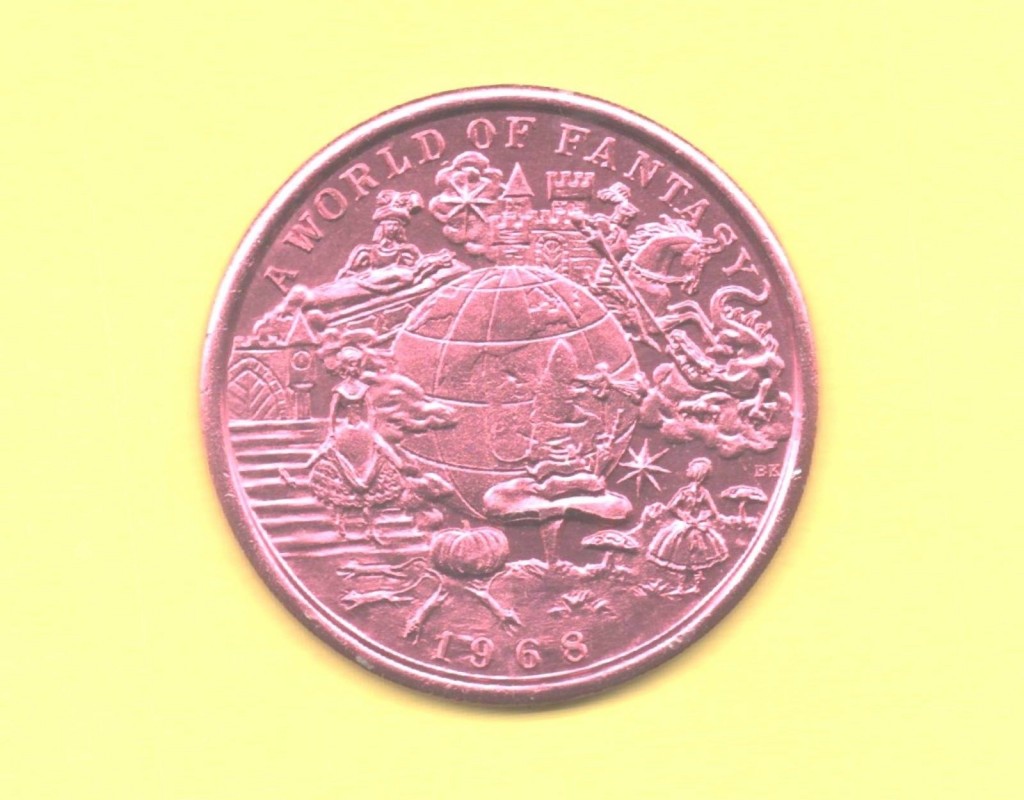Romans and Fairies? November 25, 2013
Author: Beach Combing | in : Ancient, Medieval, Modern , trackback***Dedicated to Invisible who sent the Notts example in***
Beach has slowly become aware that Roman remains in Britain were misinterpreted by imaginative yokels. Of course, already by the seventh century Roman Bath (probably?) was the City of Giants in an Anglo-Saxon poem. By the twelfth century Geoffrey of Monmouth was claiming that some Roman bricks at Caerleon were actually the remains of Arthurian Camelot. But what is more interesting is the way that early modern Britons took Roman remains as proof of fairy habitations. One nice example is the Roman signal station at Mellor Moor in Lancashire that, by the nineteenth century had been reinterpreted as a sunken fairy city. Ditto, ‘the fairy pavements’, bits of Roman tiling and perhaps mosaic pieces found in Nottinghamshire, that were so dismissed by the local farming population. Then, of course, there was Kenchester, which is useful because it shows us this habit of associating Roman things with fairy wings goes back at least to the sixteenth century and earlier in the text we learn that Roman coins were called Dwarf Money!
[Kenchester] is far more auncyent then Hereford, and was celebrated yn the Romaynes tyme, as appereth by many thinges, and especyally by antique mony of the Caesars, very often fownd withyn the towne, and yn plowghyng abowt; the which the people ther cawlleth Duarfes Mony…. Peaces of the walles and turrests yet appere, prope fundamenta, and more should have appered if the people of Herford towne and other therabowt had not yn tymes paste pulled downe muche and pyked owt of the best for their buildinges…. The place wher the town was ys al overgrown with brambles, hasylles, and lyke shrubbes. Neverthelesse here and there yet appere ruines of buyldinges, of the which the folisch people cawlle on the King of Feyres Chayre.
The Chayre is subsequently described in a later text and it appears to have been a still standing Roman niche five feet high and two or three feet broad. It is not clear from the descriptions whether the fairy king seated himself within the niche or perhaps the fairy king sat on top of the niche and that that was his throne? Anyone who has the slightest interest in fairies will learn in their first week of reading that prehistoric monuments are frequently to be associated with the ‘good people’. But what about the Romans? Beach cannot recall having read anything on the subject, though it is a fascinating question generally. Can anyone contribute some more Roman/fairy confusion? drbeachcombing AT yahoo DOT com Or would anyone care to rewrite the death of the Republic according to fairy rules?
And while Beach is on the subject here is the fairyist’s news feed for fairy stuff with this week’s headlines.
29 Nov 2013: Laura C writes: Hiya! A couple of quotes for you from here in Northumberland, it seems the fairies up here were rather fond of Roman sites too! “It is not alone at housesteads, by the Roman wall, on a meadow once occupied by a suburb of the military station of Borcovicus, that the fairies come from an adjacent cave for their moonlight dances.” – A Memoir on Northumberland, William Gibson (1860) “To the west of the station of Vindolana, or Chesterholm, are the ruins of an extensive building which has been furnished with hypocausts. “The pillars long retained the marks of fire and soot, which gave rise to the popular belief that a colony of fairies had there established themselves, and that this was their kitchen.”” – Denham Tracts Volume 2, quoting Bruce’s Wallet book of the Roman Wall (1863). *** Then Chris from Haunted Ohio Books: Archaeological Review, Volume 4, George Laurence Gomme There might be something here–search for “fairy traditions”–there is a leap from fairies to Picts with a possible misinterpretation of Roman treasure as something Pictish. There’s also a bit on earth houses and their inhabitants–fairies or peoples of antiquity believed to be fairies. Croker mentions preachers gathering at a Roman causeway called Sarn Helen (Wales) to exorcise an evil spirit. Gold bars were dug up on the spot–the devil supposedly was tempting souls with the treasure. But fairies are mentioned only peripherally. There is a lot of fairy lore in this book: On the ancient British, Roman, and Saxon antiquities of Worcestershire, Jabez Allies More “Pictish Kings” and fairies in this Interesting Roman antiquities recently discovered in Fife, Andrew Small. *** The Count has moved on from the Romans but is, as always, interesting: Regarding the belief that Roman leftovers were the work of fairies, might I draw your attention to the latest example of a similar belief I can think of? This is the legend that the 13th-century “Goblin Hall” near Gifford, East Lothian, was literally built by goblins! The myth seems to have arisen because a nobleman, wishing to have a state-of-the-art castle, brought in masons and other experts from Europe, resulting in sophisticated architecture the like of which the locals had never seen before. They thus came to believe that he must have whistled up a supernatural workforce to erect it, in particular the very impressive vaulted cellar – the Goblin Hall itself. Unlike the rest of the castle, it still exists in its entirety, though nowadays it’s deemed hazardous and permanently locked. Anyway, here’s a useful page: By the way, despite the muddled claims made about the place by the usual neo-pagan bubbleheads, the only actual goblin to be found in the area is on the sign of the Goblin Ha’ (the only hotel in Gifford, and probably its only industry – it’s a very small place). I expect they’ve repainted it a few times over the years, but it’s been essentially unchanged for a very long time – I thought you might like to see it: Thanks Chris, Count and Laura C.



